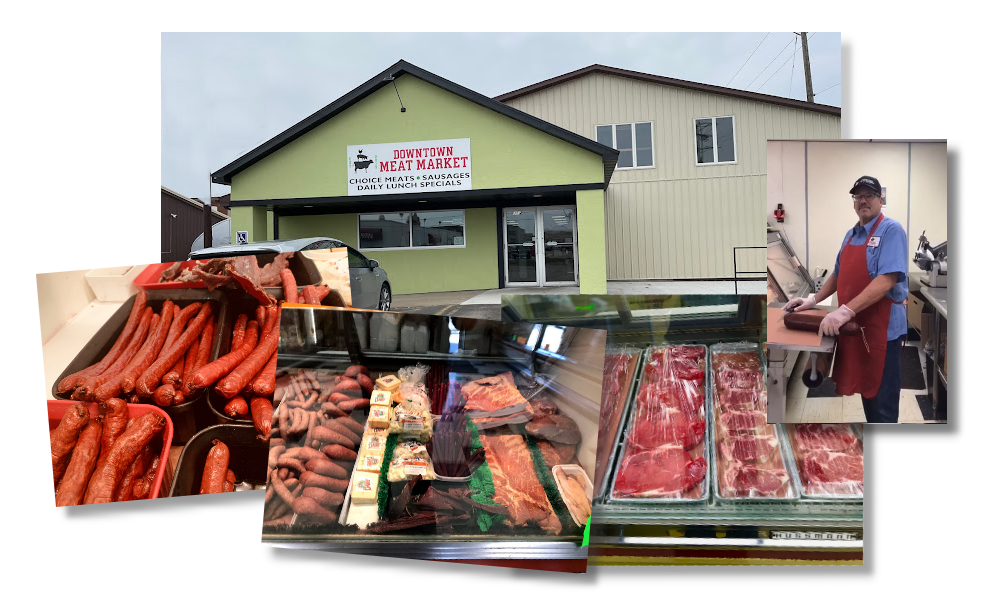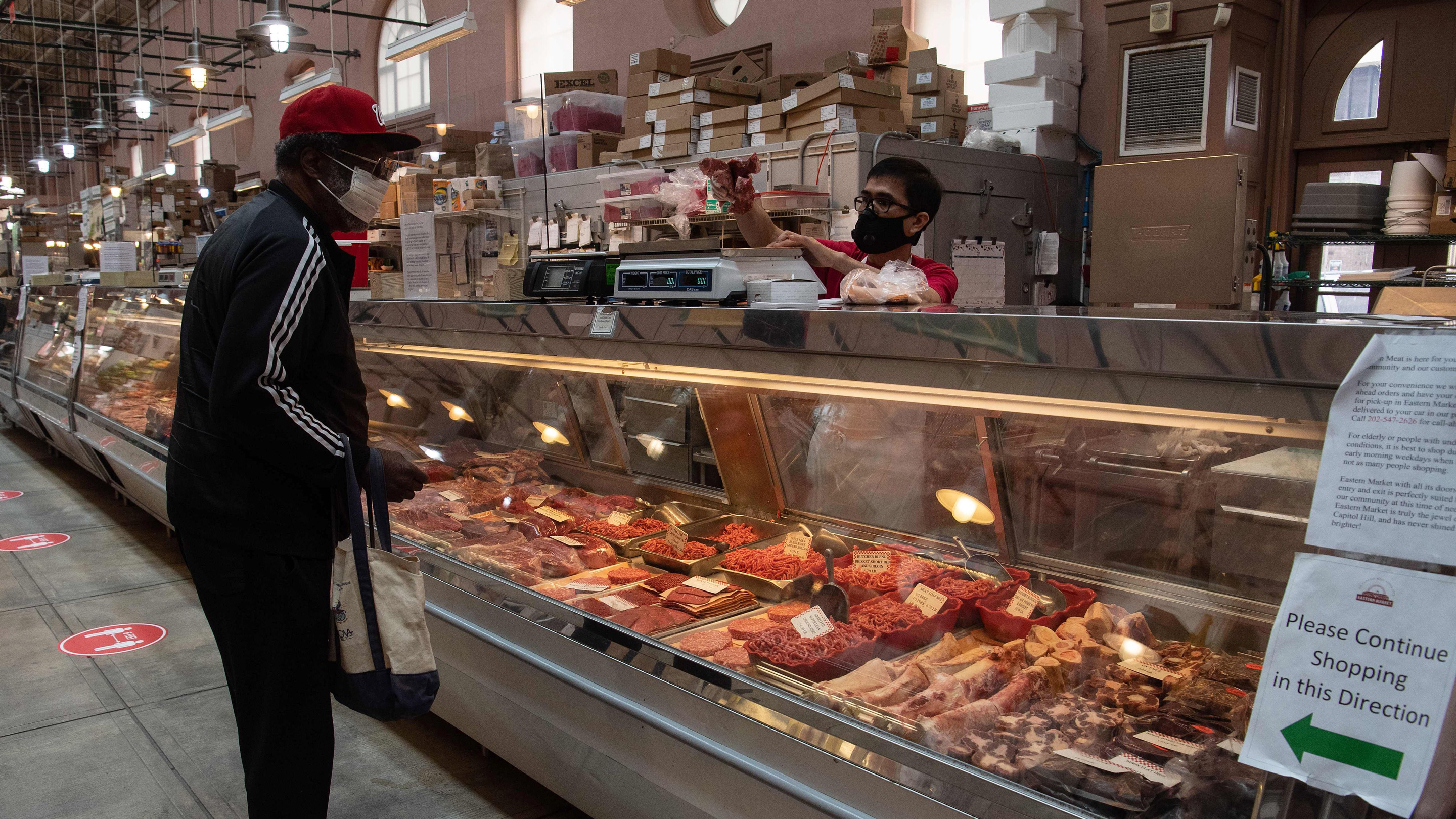What Makes Bagley Farms Meat Market Edwardsville IL Stand Out for Meat Lovers
What Makes Bagley Farms Meat Market Edwardsville IL Stand Out for Meat Lovers
Blog Article
Discover the Art of the Butcher's Cut in a Modern Meat Market
In the ever-evolving landscape of contemporary meat markets, the butcher's cut has transcended its traditional origins, combining olden craftsmanship with contemporary techniques. bagley farms meat market edwardsville il. Today's butchers are not just cpus of meat; they are well-informed artisans that highlight sustainability and honest sourcing. Their knowledge in selecting and preparing cuts customized to certain culinary needs supplies an unparalleled eating experience. Yet, what genuinely sets the modern-day butcher apart is their capability to build a deeper connection in between consumers and the beginnings of their meat. Exactly how do these masters equilibrium custom with development, and what effects does this have for the future of meat usage?
Advancement of Butchery Techniques

The mid-20th century saw butchery methods additionally refined by scientific insights right into muscle biology and meat aging, enhancing both inflammation and taste. Innovations like vacuum cleaner packaging and refrigeration extended item shelf-life, allowing butchers to branch out offerings and enhance top quality control. This period also marked the rise of customized tools, such as band saws and meat slicers, which boosted precision and performance in meat handling.
The 21st century has actually introduced electronic technology right into the butchery realm. Electronic systems currently help in tracking pet provenance and maximizing cuts to satisfy particular client choices. Furthermore, a rebirth in artisanal butchery has arised, mixing conventional abilities with modern-day knowledge to accommodate consumers looking for moral and lasting meat options. This advancement highlights a dynamic interaction between tradition and development, conference contemporary needs while maintaining the craft's heritage.

Understanding Meat Cuts

Comprehending the intricacies of meat cuts is vital for both butchers and consumers looking for quality and worth. For butchers, exact cuts reflect skill and regard for the craft, making sure marginal waste and ideal yield.
The main classifications of meat cuts consist of primal, sub-primal, and retail cuts. Primitive cuts, such as the loin, rib, and chuck, are the huge sections at first separated from the carcass. Butchers after that damage these down better right into sub-primal cuts, before lastly producing retail cuts readily available to customers, like ribeye or tenderloin. Each stage requires careful focus to anatomical framework and muscle structure.
Understanding muscle structure is crucial; muscle mass used extra often by the animal often tend to be tougher and are best fit for sluggish cooking approaches, while less-used muscular tissues, like those discovered in the loin, are a lot more tender and perfect for grilling or roasting. Knowledge with these distinctions empowers consumers to make informed options, improving their cooking undertakings.
Selecting Quality Meat
Picking the appropriate meat includes even more than just selecting a visually attractive item from the display. The art of picking top quality meat needs a critical eye and knowledge of details qualities that Read Full Article represent quality and quality. First of all, focus on the color; beef needs to have a bright, cherry-red shade, while lamb must exhibit a soft pink tone, and pork a light pink. This shows the meat is fresh and hasn't been exposed to oxygen for also lengthy.
Secondly, think about the marbling, which describes the white streaks of fat within the muscular tissue. Proper marbling is a crucial indicator of tenderness and flavor, as it melts throughout cooking, improving the meat's juiciness. Remember, higher marbling typically associates with exceptional quality cuts, such as USDA Prime.
Structure is an additional vital variable; meat must feel firm to the touch, not slimy or overly soft. Furthermore, be conscious of the scent. Fresh meat ought to have a clean, neutral odor, without any type of sour or repulsive odors.
Pairing Cuts With Food Preparation Techniques
Efficiently matching cuts of navigate to these guys meat with the appropriate food preparation methods is essential for attaining optimum flavor and structure. Various cuts differ in tenderness, marbling, and connective tissue material, each requiring specific techniques to open their potential. Tender cuts like filet mignon and ribeye, with their inherent marbling, advantage from high-heat, quick-cooking methods such as cooking or pan-searing. These methods boost the meat's natural tastes and guarantee a juicy finish.
Alternatively, tougher cuts like brisket and chuck roast are rich in collagen, which breaks down into jelly when prepared slowly. These cuts are ideal for braising or slow roasting, allowing the meat to tenderize gradually and create deep, intricate flavors. Cuts such as brief ribs and pork shoulder fare well with slow-cooking methods, where extended cooking times change their robust textures right into delicious recipes.
Lamb shanks and oxtail, which need prolonged cooking to tenderize, are excellent candidates for stewing or slow simmering. These methods coax out rich, passionate tastes while keeping moisture. By understanding the unique qualities of each cut, chefs and home cooks alike can elevate their culinary productions, guaranteeing each dish is both satisfying and remarkable.
The Butcher's Role Today
Navigating the progressing landscape of the contemporary meat market, the butcher's duty today expands past plain prep work of cuts. Contemporary butchers are cooking artisans, educators, and advocates for sustainable practices.
Along with crafting specific cuts, butchers now involve straight with consumers, using cooking suggestions and customizing choices to match private requirements and preferences. Their know-how in meat aging, marbling, and taste profiles encourages consumers to make enlightened decisions, enhancing their cooking experiences. This customized service exhibits the butcher's evolving duty as a relied on consultant in the kitchen area.
Additionally, butchers are essential in reducing waste, making use of whole pets to create diverse items such as see this sausages and stocks - bagley farms meat market edwardsville il. This extensive technique not just values the animal yet additionally straightens with modern sustainability objectives. This way, the modern-day butcher symbolizes both tradition and development, adjusting to an ever-changing market while preserving the artistry and honesty of their craft

Verdict
Mastery in recognizing diverse meat cuts and high quality signs empowers butchers to provide educated referrals, aligning specific cuts with optimum food preparation methods. By honoring historical practices while welcoming contemporary needs, the butcher's function continues to be essential in today's advanced meat market.
Report this page